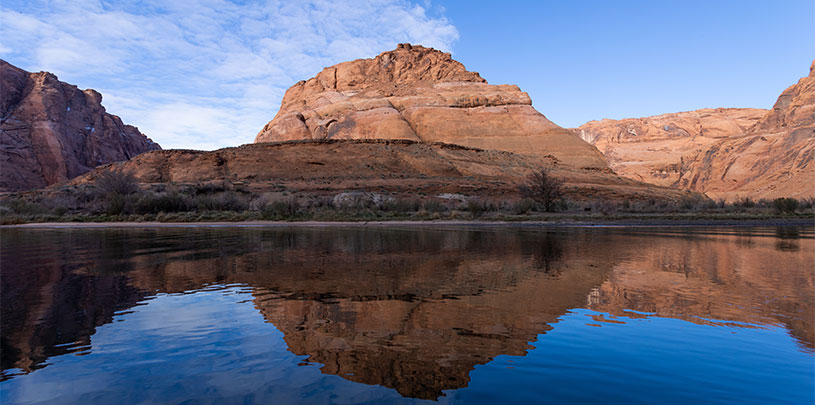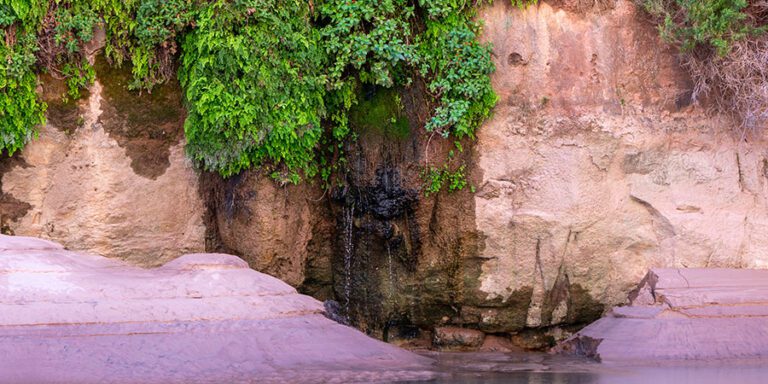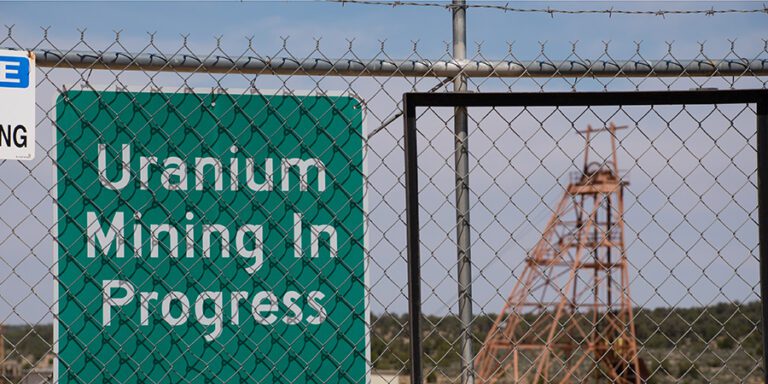
New Black Mesa dams proposed near Kayenta would pump water from the Colorado River, San Juan River, or local aquifers.
In November 2022, the Federal Energy Regulatory Commission announced that it had received applications from Nature and People First, a Massachusetts-based company organized by a French entrepreneur, for preliminary permits for three proposed hydroelectric projects on the rims of Black Mesa and across the lands below, near Kayenta, Arizona, on Navajo Nation land.
In response, the Navajo Nation told the commission that it opposes the applications.
Together, the three Black Mesa dam projects (North, East, and South) would include nine reservoirs and other major infrastructure that could span nearly 50 miles — from Tsegi Canyon to Rough Rock, and beyond.
While the projects would disturb the northern and western rims of the mesa and valleys to the north first, they would ultimately impact the heart of Black Mesa, a homeland of both the Navajo and Hopi peoples.
Based on the recommendations of the Navajo Department of Fish and Wildlife and Navajo Natural Heritage Program, the Navajo Nation designates the area where the projects would be built as “highly sensitive.” The area is also culturally important to the Hopi Tribe.
Dams could tap Colorado River water
The company identifies four potential water sources for the projects. These include the Colorado River, the San Juan River, and two unnamed underground aquifers. Based on the location of the projects in relation to these water sources, water must either be transported great distances, pumped from underground, or a combination of the two. The Navajo Nation claims rights to these water sources and is concerned the projects could adversely affect its water rights.
The commission published notice of these dam applications in the Federal Register on November 7, 2022. It then opened a 60-day comment period. The Navajo Nation, the Grand Canyon Trust, and others filed motions asking to be included throughout the dam application process and expressing their questions and concerns. If granted, the preliminary permits would give the company time to conduct studies to determine if the projects are feasible and ultimately apply for a license to build them.
How would the dams work?
The three proposed hydroelectric projects aim to generate electricity by recirculating water between high-elevation upper reservoirs and lower reservoirs.
For example, the project developer estimates that the Black Mesa North project alone would generate 5 billion kilowatt-hours of electricity per year (the same amount generated by Glen Canyon Dam when Lake Powell is full) by moving 32.5 billion gallons (100,000 acre-feet) of water through three tunnels connecting a single upper reservoir to three lower reservoirs. As the water dropped nearly 2,000 feet in elevation, it would turn nine turbine generators in three new powerhouses to produce electricity.
That electricity would be distributed onto 80 miles of new transmission lines and connected to the existing Navajo or Powell substations. Then it would be sent on to customers, likely exporting the power to distant cities off the reservation. To refill the upper reservoirs, water would be pumped from the lower reservoirs back uphill through the tunnels using solar energy. The East and South projects would require similar infrastructure and water to operate.
New Black Mesa dam projects require massive amounts of water
According to the applications, the projects would require huge amounts of water from the Colorado River, San Juan River, or local groundwater sources to fill the reservoirs and replace water lost to evaporation. The proposed reservoirs for all three projects would have the capacity to store over 126 trillion gallons (450,000 acre-feet) of water, which is more than the state of Nevada’s entire allocation of water (300,000 acre-feet) from the Colorado River in a year. This is also more water than best estimates say the Navajo Nation currently uses in a year — keeping in mind that many Navajo communities don’t have running water. In total, the projects would store five times more water than can be held today in all the significant reservoirs and lakes on the Navajo Nation combined.
The amount of water these projects would use — and lose to evaporation — is significant, especially in a time of extreme drought. Basic access to water remains a big problem for communities across the Navajo Nation. Many families travel long distances to fill water tanks for drinking and household use, and to water livestock. On average, an individual on the Navajo Nation uses only seven gallons of water a day compared to 80-100 gallons a day for the average U.S. resident.
These projects could increase the stress on aquifers, springs, and other water sources and make it even harder for Navajo and Hopi communities to access water for important household and cultural uses.
Navajo Nation opposes new dam projects
The Navajo Nation and the Navajo Tribal Utility Authority have weighed in on the preliminary permit applications. So have a number of organizations including Tó Nizhóní Ání, Diné Citizens Against Ruining our Environment, the Grand Canyon Trust, American Rivers, and the Center for Biological Diversity.
According to the Navajo Nation, the “Project[s] may adversely impact the land, water, Navajo Endangered and Threatened wildlife and plants including Federally listed species under the Endangered Species Act, and cultural resources of the Navajo Nation.”
The Navajo Nation also expressed concern that water use upstream could reduce river and groundwater flows affecting cultural resources downstream that are important for ceremonial and other uses. This includes the confluence of the Colorado River with the Little Colorado River in the Grand Canyon, the Salt Trail, and Blue Springs, which flows into the Little Colorado River.
The Navajo Nation has requested meaningful government-to-government consultation with the Federal Energy Regulatory Commission, and separate consultation with the company. The Navajo Tribal Utility Authority took no position on the projects. According to the company, however, the Chilchinbeto Chapter of the Navajo Nation has passed resolutions supporting the projects.
Concerns about water and cultural resources near Black Mesa
Over 5,000 comment letters were submitted to the commission. One commenter, a registered voter of the Black Mesa Chapter of the Navajo Nation, expressed concern “about the water level impact that the Second Mesa area may endure” based on a 2022 study by the U.S. Geological Survey regarding groundwater levels near Black Mesa. The comment indicated that “water levels need to be monitored” due to increased demands on groundwater in the area.
Troy Honahnie, Jr., a member of the Hopi Tribe, raised his “clear and absolute objection to all three hydropower projects,” declaring that dam projects in the area “will irreversibly compromise the spiritual integrity of our ancestral clan places.” Honahnie also emphasized the cultural affiliation of his clan and the Hopi Tribe “to all prehistoric archaeological sites located on Black Mesa, including but not limited to all sites within the proposed project area” and that the proposals “require that consultation occur with myself, my clan, and the Hopi Tribe before any action is taken.”
The commission will now consider whether to grant or deny the preliminary permit applications for the Black Mesa dams. Decisions like this typically take six months to a year and sometimes much longer.




